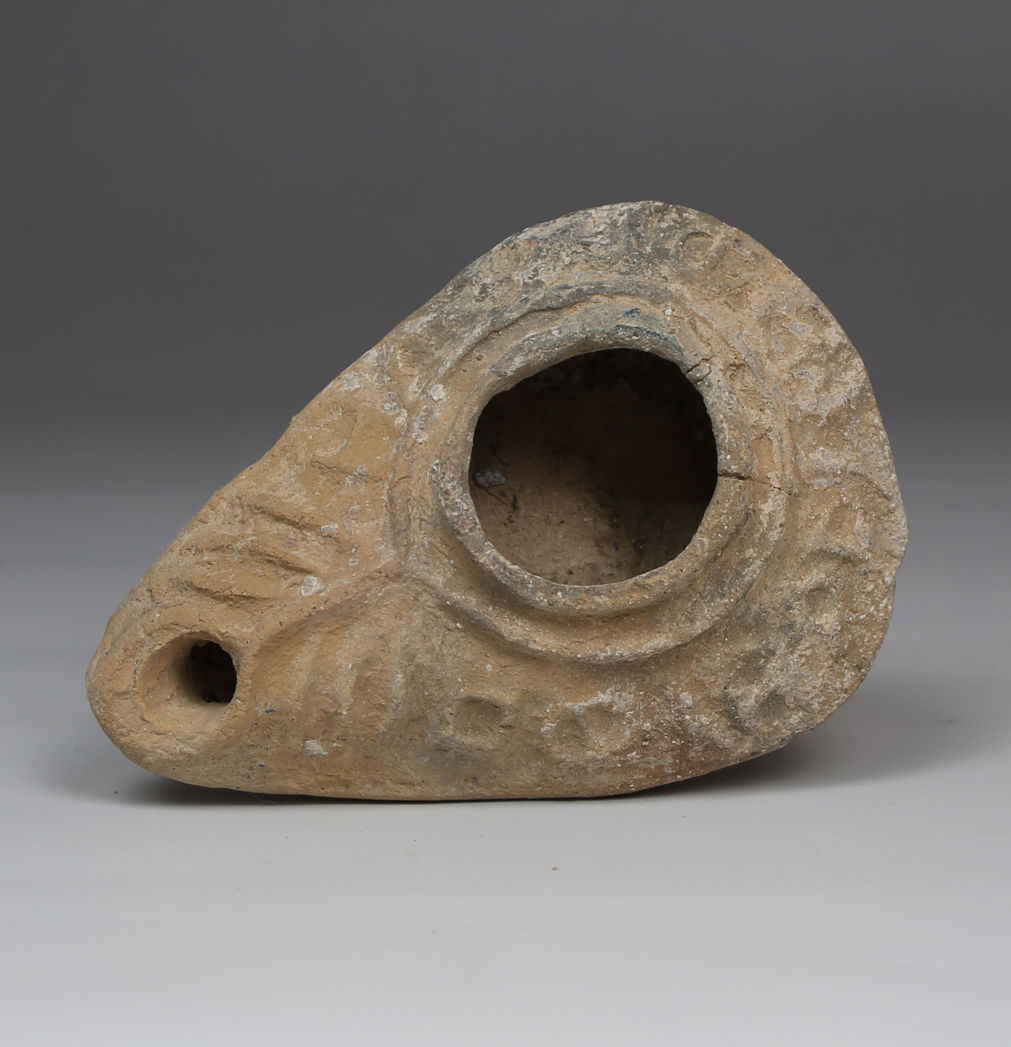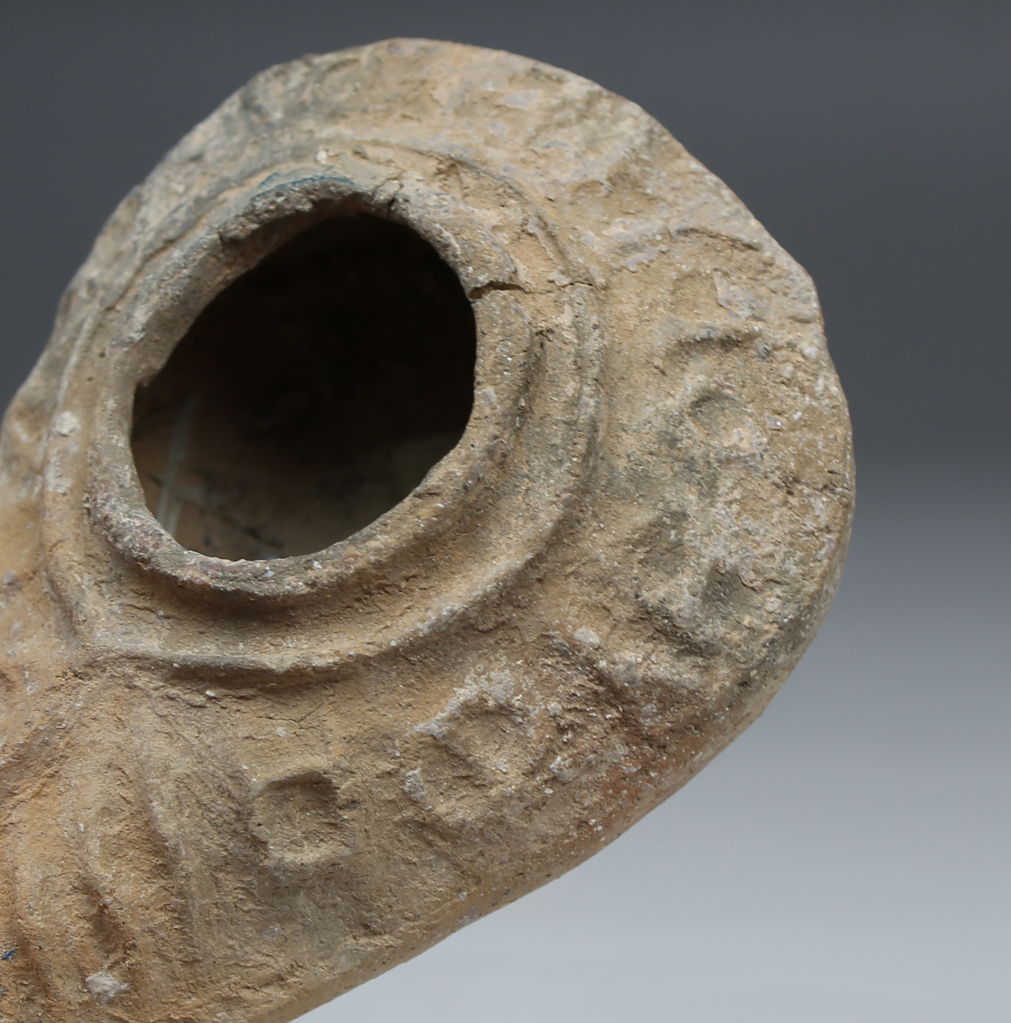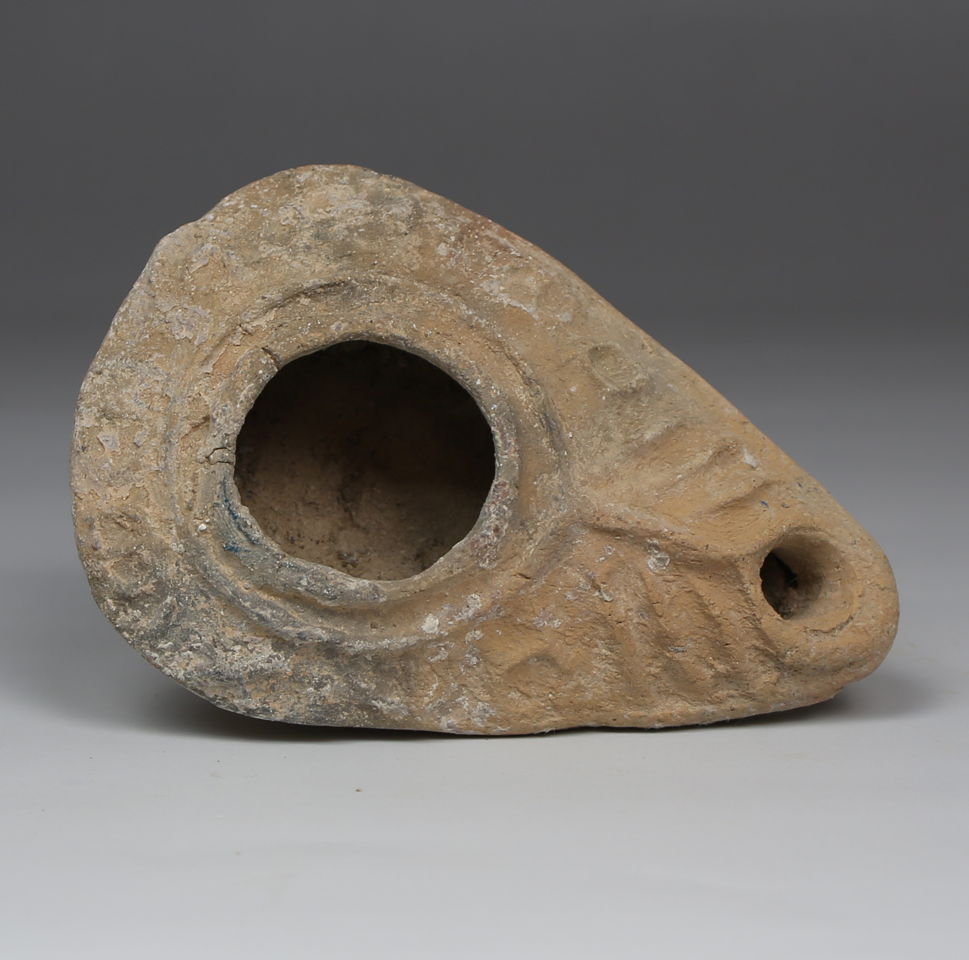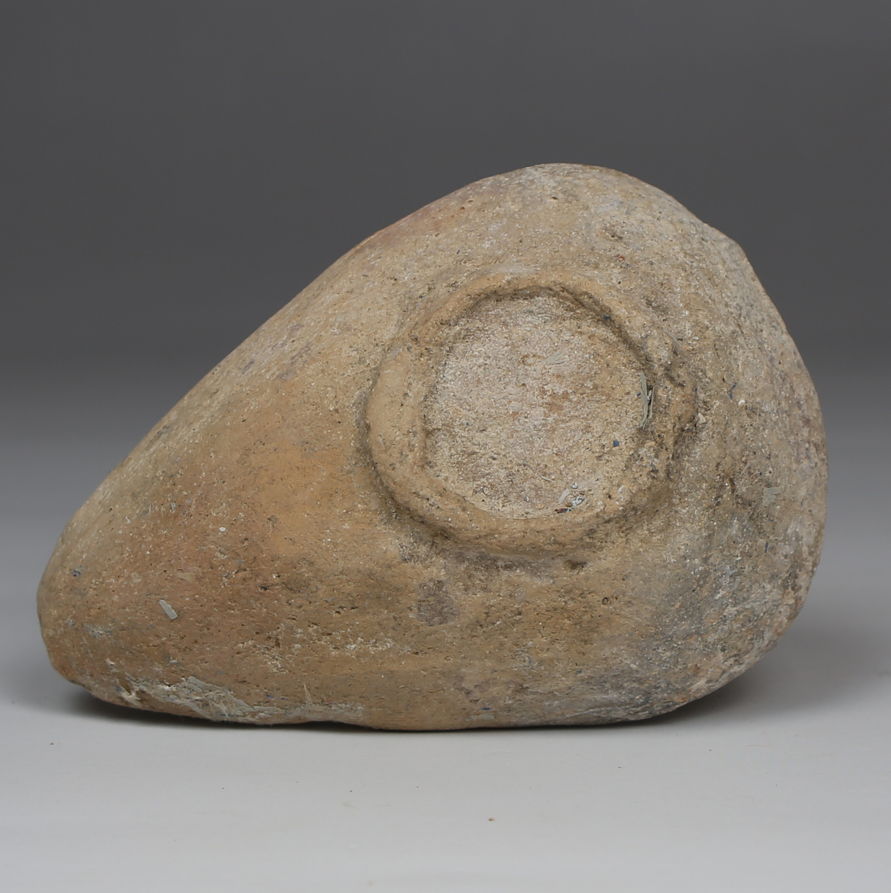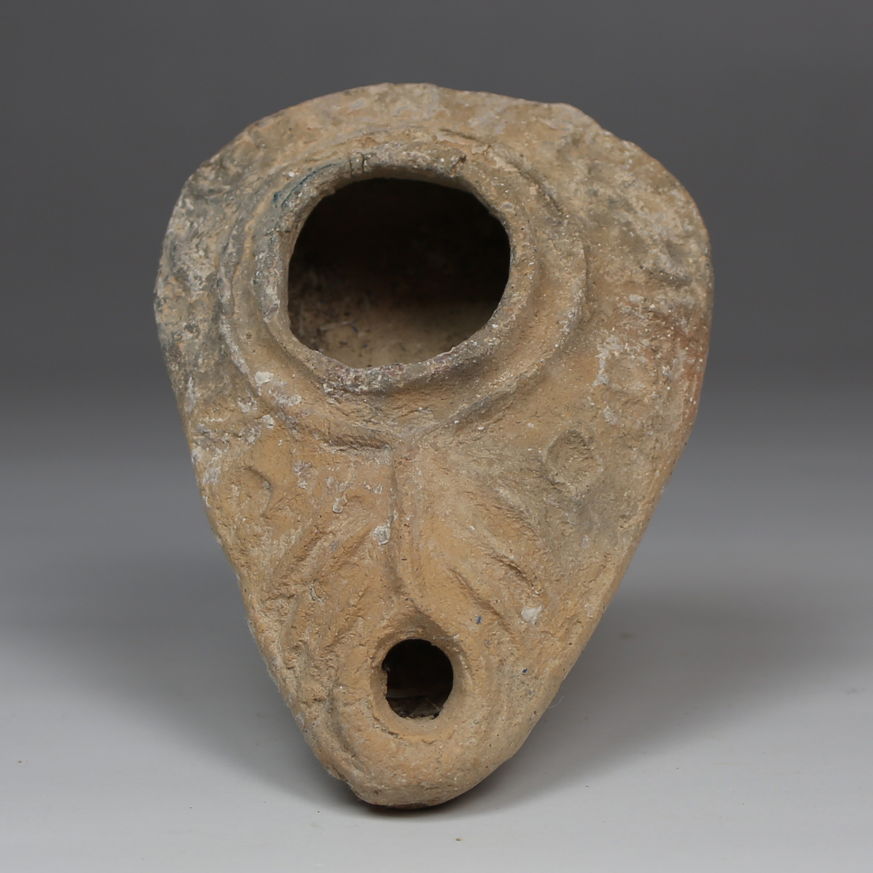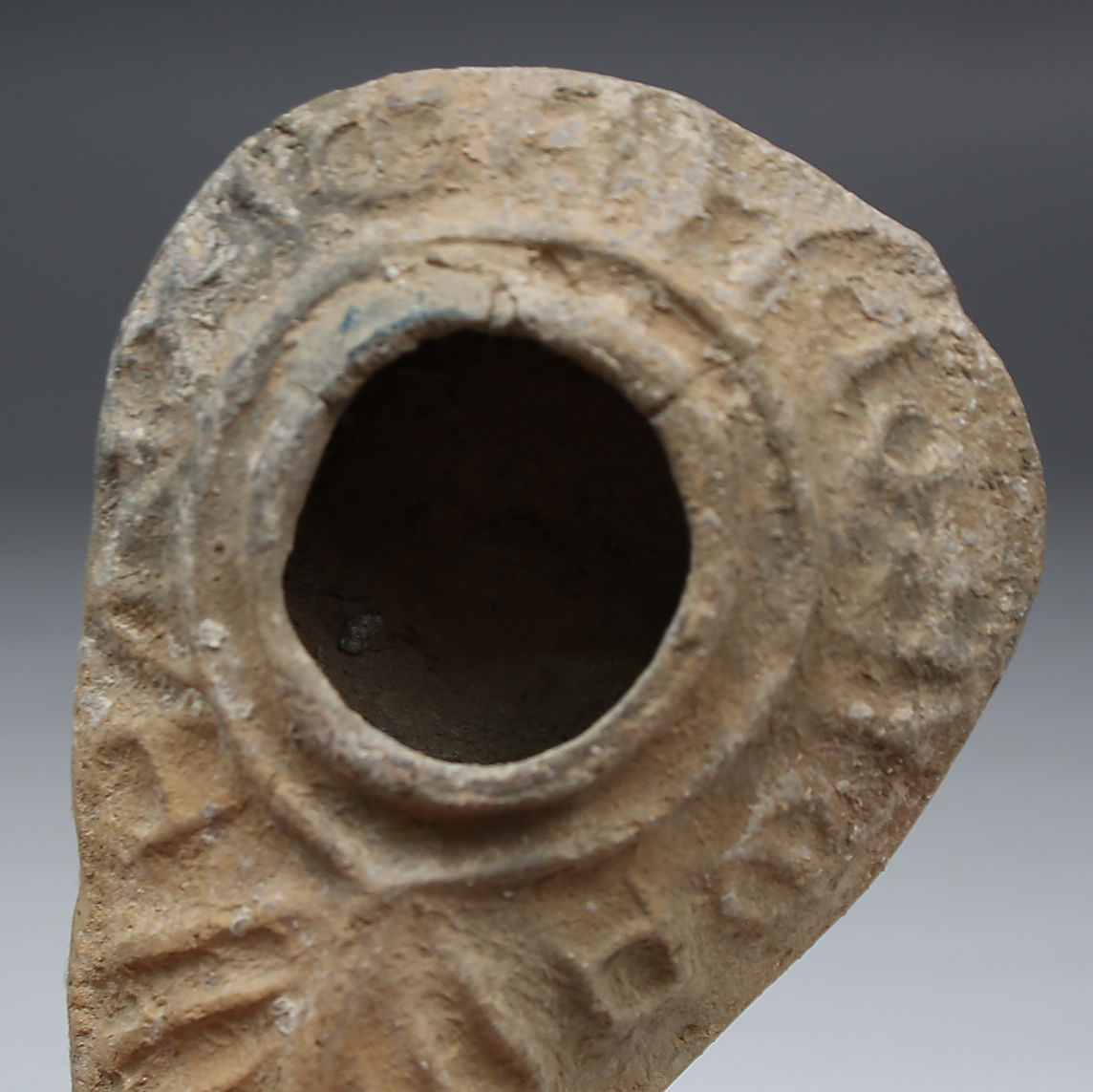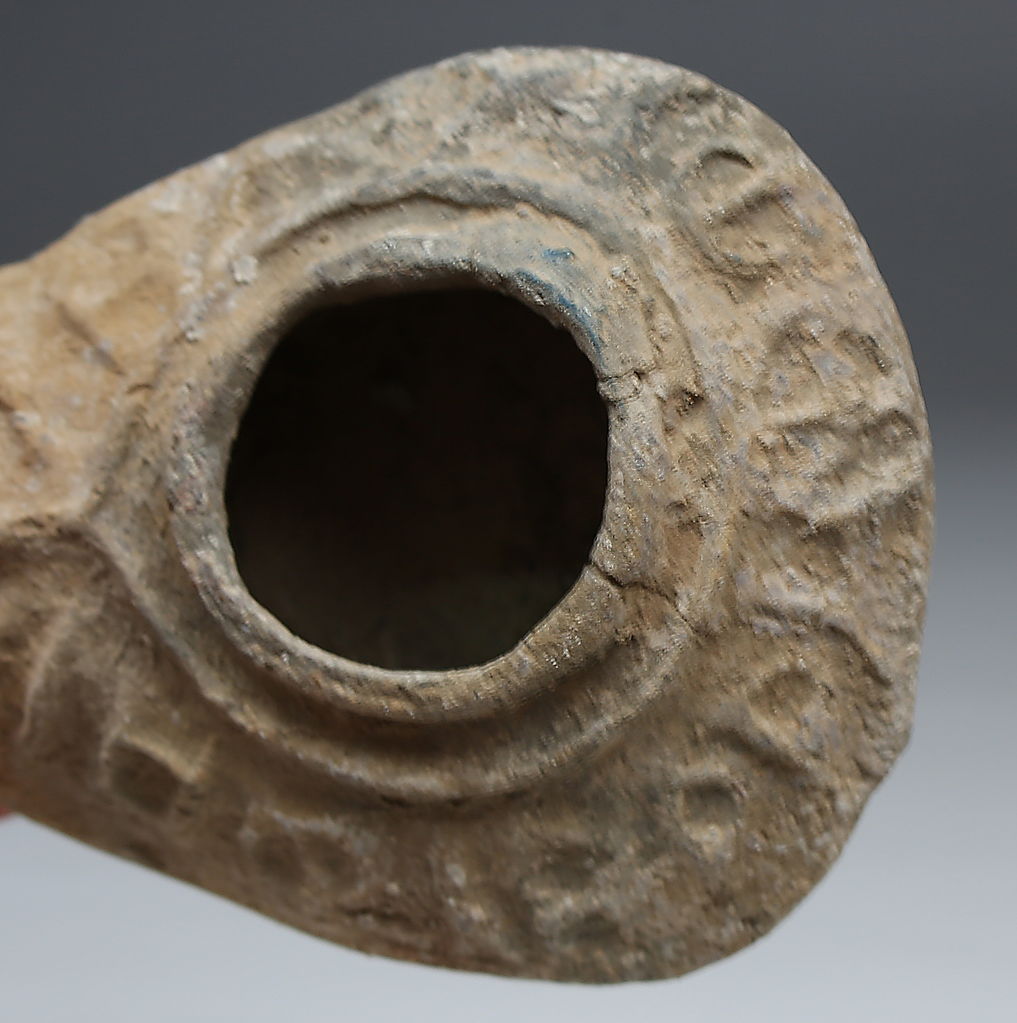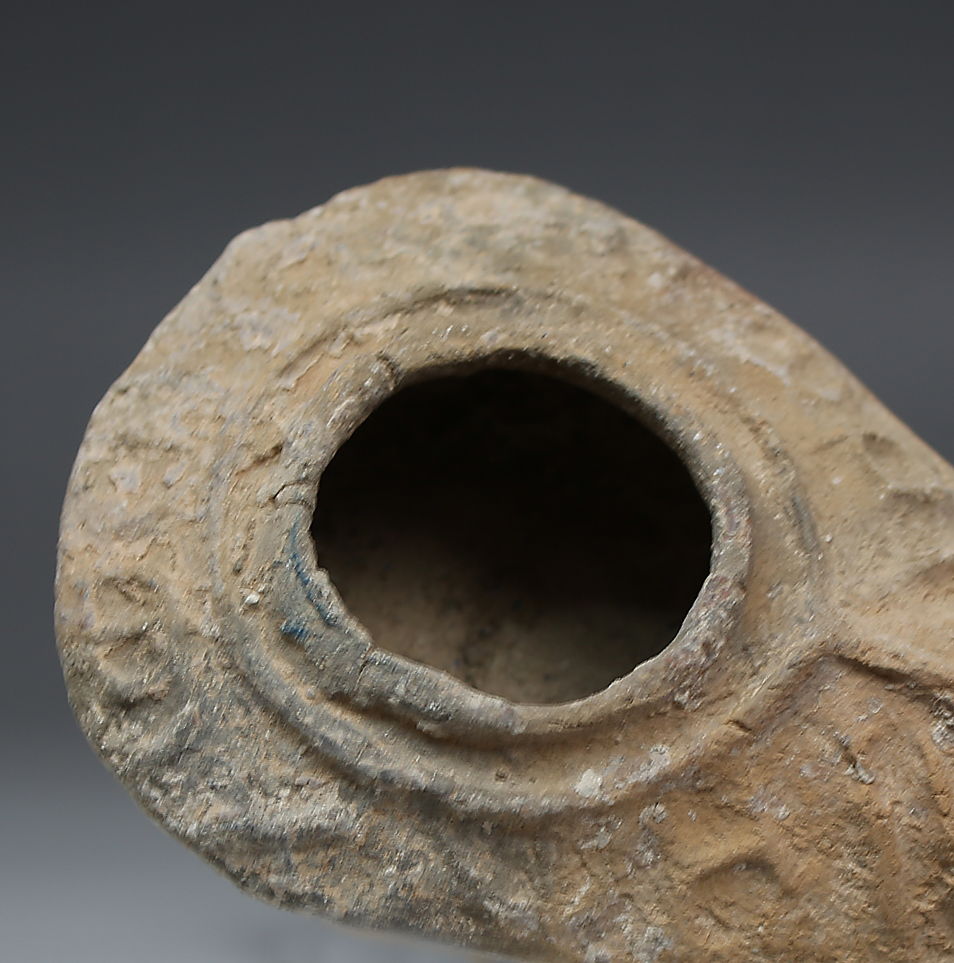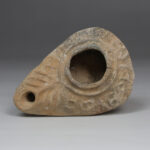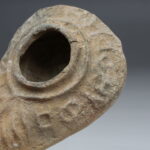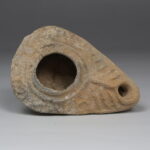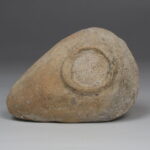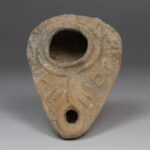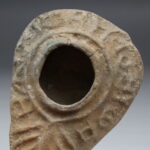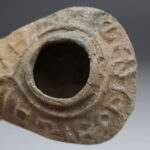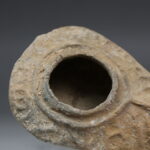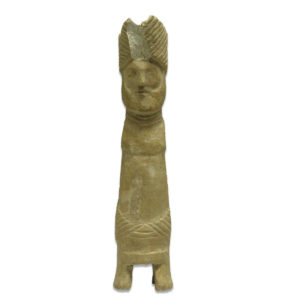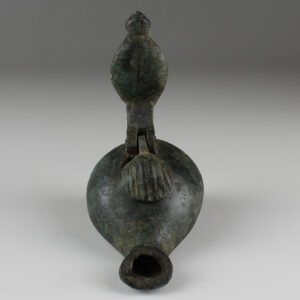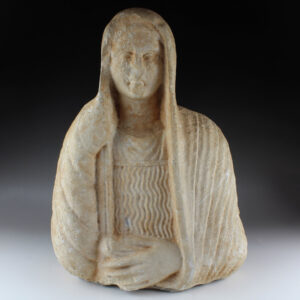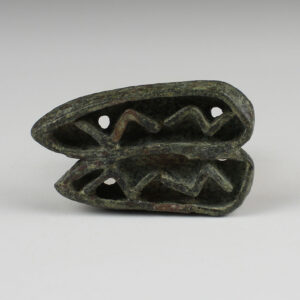Description
| ITEM | Oil lamp with inscription ‘The light of Christ shines for all’ |
| MATERIAL | Pottery |
| CULTURE | Byzantine |
| PERIOD | 4th – 5th Century A.D |
| DIMENSIONS | 30 mm x 59 mm x 85 mm |
| CONDITION | Good condition |
| PROVENANCE | Ex Palestine private collection, acquired in the 1990s |
A Byzantine oil lamp inscribed with the phrase “The light of Christ shines for all” is a remarkable artifact that reflects the deep spiritual and theological beliefs of the Byzantine Empire. This inscription emphasizes the central role of Christianity in daily life and religious practices during the Byzantine period. Oil lamps were essential for both practical illumination and religious rituals, and incorporating a Christian message into their design highlights the integration of faith into everyday objects. The inscription serves as both a devotional statement and a reminder of the divine presence in the lives of believers, making the lamp a significant symbol of Christian piety and enlightenment.
The design and craftsmanship of Byzantine oil lamps were highly refined, often made from materials such as clay, metal, or glass. These lamps frequently featured intricate decorations, including religious symbols, motifs, and inscriptions. The inclusion of the inscription “The light of Christ shines for all” on the lamp would have been achieved through engraving or molding, demonstrating the skill of Byzantine artisans. This inscription not only personalized the lamp but also reinforced the idea that light, both physical and spiritual, is a manifestation of Christ’s presence and guidance in the world. The lamp’s practical function as a source of light was thus imbued with deep religious significance.
In addition to its spiritual message, the Byzantine oil lamp with this inscription provides valuable insights into the religious and cultural practices of the period. The lamp would have been used in private homes, churches, or during religious ceremonies, emphasizing the importance of maintaining a connection with the divine in various aspects of life. The presence of such an inscription also reflects the broader trend of incorporating Christian themes into art and everyday objects, illustrating how Byzantine art and material culture were deeply intertwined with religious beliefs.


